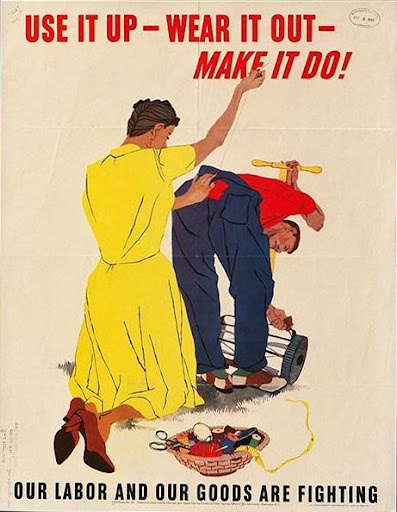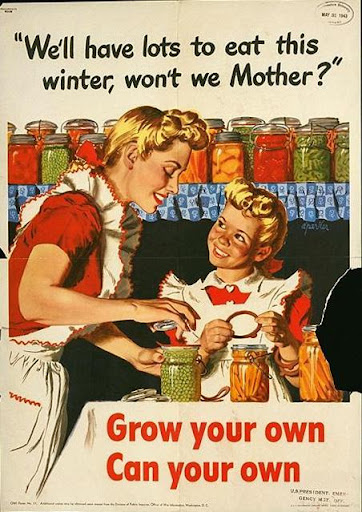
Raising the Flag on Iwo Jima is a historic photograph taken on February 23, 1945, by Joe Rosenthal. It depicts five United States Marines and a U.S. Navy corpsman raising the flag of the United States atop Mount Suribachi during the Battle of Iwo Jima in World War II.

"A dense column of smoke rises more than 60,000 feet into the air over the Japanese port of Nagasaki, the result of an atomic bomb, the second ever used in warfare, dropped on the industrial center August 8, 1945, from a U.S. B-29 Superfortress."

"F4U's and F6F's fly in formation during surrender ceremonies; Tokyo, Japan. USS MISSOURI left foreground." September 2, 1945.

At the White House, President Truman announces Japan's surrender. Abbie Rowe, Washington, DC, August 14, 1945

"A truck load of bodies of prisoners of the Nazis, in the Buchenwald concentration camp at Weimar, Germany. The bodies were about to be disposed of by burning when the camp was captured by troops of the 3rd U.S. Army." Pfc. W. Chichersky, April 14, 1945.

Nuremberg Trials: looking down on the defendants' dock. Ca. 1945-46.

. "Pearl Harbor, T.H. taken by surprise, during the Japanese aerial attack. USS WEST VIRGINIA aflame." December 7, 1941

Adolf Hitler and Benito Mussolini in Munich, Germany, ca. June 1940.

President Franklin D. Roosevelt signing the Declaration of War against Japan, December 8, 1941.
http://www.archives.gov/research/military/ww2/photos/
To learn more about posters during WWII click the following:
- The posters are divided into six key themes common in WWII.
http://www.conceptart.org/forums/attachment.php?attachmentid=639894&stc=1&d=1239090573

http://www.conceptart.org/forums/attachment.php?attachmentid=639179&d=1239025980

During World War Two, people were repeatedly told to keep any information they may have had about military planning to themselves.
Still good advice 70 years later.
http://semperfiparents.com/
http://hubpages.com/hub/When-the-Cookie-Crumbles-The-War-of-Ideas
 http://www.olive-drab.com/gallery/photos/cadetnursecorps_poster_sm.jpg
http://www.olive-drab.com/gallery/photos/cadetnursecorps_poster_sm.jpg https://blogger.googleusercontent.com/img/b/R29vZ2xl/AVvXsEhFm9TVrSXhbMWFfEcJErzY9ecJRjfgJJSSSnedeV1HgApWDh_cNBgszPRyKXIgLKocz3lixPlvNgWD6Xm-JHCjKtonLXnuDtNeNdhuXLd31dKeJS465zbl1dAWLAp408QW6fkhKnkqHk2F/s1600/sexuality-social-hygiene-1940-vd-as-a-woman-51-395x500.jpg
https://blogger.googleusercontent.com/img/b/R29vZ2xl/AVvXsEhFm9TVrSXhbMWFfEcJErzY9ecJRjfgJJSSSnedeV1HgApWDh_cNBgszPRyKXIgLKocz3lixPlvNgWD6Xm-JHCjKtonLXnuDtNeNdhuXLd31dKeJS465zbl1dAWLAp408QW6fkhKnkqHk2F/s1600/sexuality-social-hygiene-1940-vd-as-a-woman-51-395x500.jpg http://www.psywarrior.com/VDPoster001.jpg
http://www.psywarrior.com/VDPoster001.jpg
http://likeaphobia.us/images/187.jpg
 http://rpmedia.ask.com/ts?u=/wikipedia/commons/thumb/7/77/Ww2_poster_oct0404.jpg/89px-Ww2_poster_oct0404.jpg
http://rpmedia.ask.com/ts?u=/wikipedia/commons/thumb/7/77/Ww2_poster_oct0404.jpg/89px-Ww2_poster_oct0404.jpg
http://lh3.ggpht.com/_92V4nSiJk-o/RRb6mxaJABI/AAAAAAAAALw/Zw2EeCg0Qeo/ww1646-79.jpg
 https://lh5.googleusercontent.com/-4PwPeLx4WtE/RRb5_LteABI/AAAAAAAAABQ/9ARt0JjR1uA/s512/ww1645-51.jpg
https://lh5.googleusercontent.com/-4PwPeLx4WtE/RRb5_LteABI/AAAAAAAAABQ/9ARt0JjR1uA/s512/ww1645-51.jpgSavings and Austerity

 Scrap metal such as old cooking pans could be melted down and used again. Children with push-carts and old prams collected scrap metal from people's homes. They hoped old pots and pans would soon roar into the sky as a Spitfire plane!
Scrap metal such as old cooking pans could be melted down and used again. Children with push-carts and old prams collected scrap metal from people's homes. They hoped old pots and pans would soon roar into the sky as a Spitfire plane! https://lh4.googleusercontent.com/-D0U7MElAk2w/RRb7Jp9nABI/AAAAAAAAATg/lbK02XmVfEU/s512/ww0207-72.jpg
https://lh4.googleusercontent.com/-D0U7MElAk2w/RRb7Jp9nABI/AAAAAAAAATg/lbK02XmVfEU/s512/ww0207-72.jpgHealth and Safety

http://digital.library.northwestern.edu/wwii-posters/img/ww0207-82.jpg![[Poster]](http://www.st-andrews.ac.uk/~pv/pv/courses/posters/images3/deserve.jpg) http://www.st-andrews.ac.uk/~pv/pv/courses/posters/images3/deserve.jpg
http://www.st-andrews.ac.uk/~pv/pv/courses/posters/images3/deserve.jpg
![[Poster]](http://www.st-andrews.ac.uk/~pv/pv/courses/posters/images3/deserve.jpg) http://www.st-andrews.ac.uk/~pv/pv/courses/posters/images3/deserve.jpg
http://www.st-andrews.ac.uk/~pv/pv/courses/posters/images3/deserve.jpg![[Poster]](http://www.st-andrews.ac.uk/~pv/pv/courses/posters/images7/japan2.jpg) http://www.st-andrews.ac.uk/~pv/pv/courses/posters/images7/japan2.jpg
http://www.st-andrews.ac.uk/~pv/pv/courses/posters/images7/japan2.jpg This poster is from the March 1933 Reichstag election, the last one in which Germans had a choice. The poster shows President Hindenburg and Chancellor Hitler. The caption: “The Reich will never be destroyed if you are united and loyal.” Courtesy of Dr. Robert D. Brooks . http://www.calvin.edu/academic/cas/gpa/posters/1933ba.jpg
This poster is from the March 1933 Reichstag election, the last one in which Germans had a choice. The poster shows President Hindenburg and Chancellor Hitler. The caption: “The Reich will never be destroyed if you are united and loyal.” Courtesy of Dr. Robert D. Brooks . http://www.calvin.edu/academic/cas/gpa/posters/1933ba.jpg
The text reads: “Unshakable, determined to fight, certain of victory!”
 30 Januarhttp://www.calvin.edu/academic/cas/gpa/posters/1943.jpgy 1943 was the 10th anniversary of the Nazi seizure of power. This poster suggests that the 1943 battle against the world is the continuation of the battle that led to Nazi victory in 1933. The caption: “30 January 1933-1943. One Battle! One Victory!” The theme is a takeoff on one of Mjölnir’s pre-1933 posters. This poster was withdawn after Stalingrad.
30 Januarhttp://www.calvin.edu/academic/cas/gpa/posters/1943.jpgy 1943 was the 10th anniversary of the Nazi seizure of power. This poster suggests that the 1943 battle against the world is the continuation of the battle that led to Nazi victory in 1933. The caption: “30 January 1933-1943. One Battle! One Victory!” The theme is a takeoff on one of Mjölnir’s pre-1933 posters. This poster was withdawn after Stalingrad. http://www.calvin.edu/academic/cas/gpa/posters/vsturm.jpgThis fall 1944 poster is by Mjölnir. The Volksturm was the Nazi attempt to call on the last reserves. Those too young or too old for regular military service were called into service. The caption translates as “For freedom and life.” Courtesy of Dr. Robert D. Brooks.
http://www.calvin.edu/academic/cas/gpa/posters/vsturm.jpgThis fall 1944 poster is by Mjölnir. The Volksturm was the Nazi attempt to call on the last reserves. Those too young or too old for regular military service were called into service. The caption translates as “For freedom and life.” Courtesy of Dr. Robert D. Brooks.
The Germans worked to gather as much old material for the war effort as possible. This poster is for a 1943 clothing drive. The text translates as: “Get rid of old cloth and shoes!
To Learn more about people's experiences in WWII click here



![[Poster]](http://www.st-andrews.ac.uk/~pv/pv/courses/posters/images6/lookout.jpg)
![[Poster]](http://www.st-andrews.ac.uk/~pv/pv/courses/posters/images4/nobody1.jpg)
Corporate Webdesign Nürnberg.Wir realisieren Ihren Internetauftritt. Überzeugen Sie Ihre Kunden mit Webdesign und profitieren Sie vom Wiedererkennungswert.
ReplyDeleteWebdesign Nürnberg für Ihren perfekten Internetauftritt.Überzeugen Sie Ihre Kunden mit einer Corporate Website und profitieren Sie vom hohen Wiedererkennungswert unseres Webdesigns.